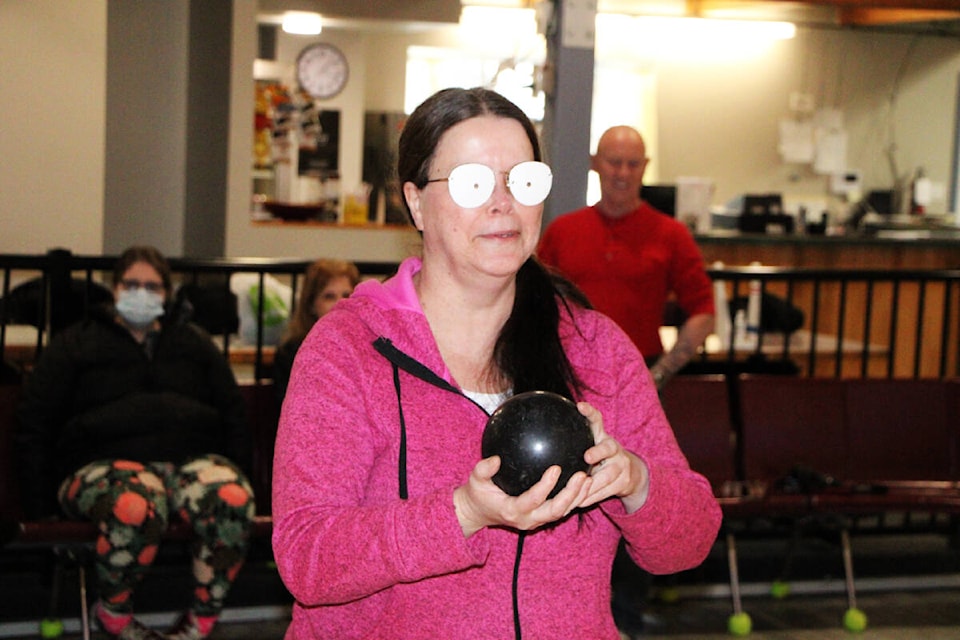The glasses changed everything.
My sight had narrowed down to a tiny pinhole in the centre of each lens.
As I walked to my bowling lane, I had no depth perception, no peripheral vision. I had to use my toes to feel the floor - was it raised? I couldn’t tell. I had to look down at the ball in my hands to actually see it. It was unnerving.
The glasses were loaned to me by the 100 Mile House and District Blind and Visually Impaired White Cane Club during their bowling session last Tuesday.
The pair I was wearing are designed to make a person understand what it is like to have tunnel vision.
Some, like Katelyn Seiler, live with this condition every day.
Seiler suffers from Retinitis pigmentosa (RP), a condition that usually begins with the loss of night vision in childhood. It gradually progresses until a person’s peripheral vision begins to narrow and it feels like they are looking through a tunnel.
Seiler was 10 years old when doctors figured out something was wrong. Today, she can’t see beyond the tiny pinhole, making getting around harder.
“I have no peripheral vision anymore and no depth perception,” she said.
Although she takes her white cane with her when she goes out, it’s not easy. “I walk into things a lot. I trip a lot,” she said. “I get lost.”
When she falls, people walk by her. If she has to focus on things for long periods of time she gets headaches.
“It’s more difficult in the wintertime because I can’t tell if I’m on the road or sidewalk because of the snow and ice. I can get around better in the summer.”
Seiler is among 1.5 million people in Canada who identify as having sight loss.
An estimated 5.59 million more have an eye disease that could result in blindness.
About 252,000 people in B.C. alone identify with having vision loss from mild to severe, according to a 2017 survey by the Canadian National Institute of the Blind (CNIB).
Jim Vinson and his sister Marilyn both have dominant optic atrophy, a neuro-ophthalmic condition in which the optic nerve starts dying.
The front of the eye works fine but the back of the eye can’t read the signals to send to the brain.
Marilyn began wearing glasses when she was eight and Jim when he was 12. They were both considered legally blind by the time they reached 40.
I slipped on a pair of macular degeneration glasses.
It was strange - and a lot different from the other ones. Imagine looking at a moose through binoculars. The trees are visible around the edge of the lens but the moose in the middle is missing.
If I looked to the side I could see ahead but it threw off my sense of direction. My arm wanted to roll the ball in the same direction my head was angled towards.
I am not the best bowler, but I was constantly getting gutter balls while wearing the glasses.
Jim came to my rescue, showing me a line of dots running along the floor just before the line where you release the ball.
He advised me not to run up to the line but just step up to it, centre my arm, and release the ball.
Son of a gun!
I can’t say my game improved that much but I wasn’t floundering as often.
When my ball finally stayed in the lane and not the gutter, the group behind me cheered.
Thankfully, I could remove the glasses. But even then my natural vision was still pretty fuzzy.
It was a relief to put on my regular glasses, and have my world back in focus.
I took another run down the bowling alley, just to see what would happen. I got two pins.
Not amazing by any means but it made me realize how lucky I am to have my sight.
fiona.grisswell@100milefreepress.net
Like us on Facebook and follow us on Twitter
